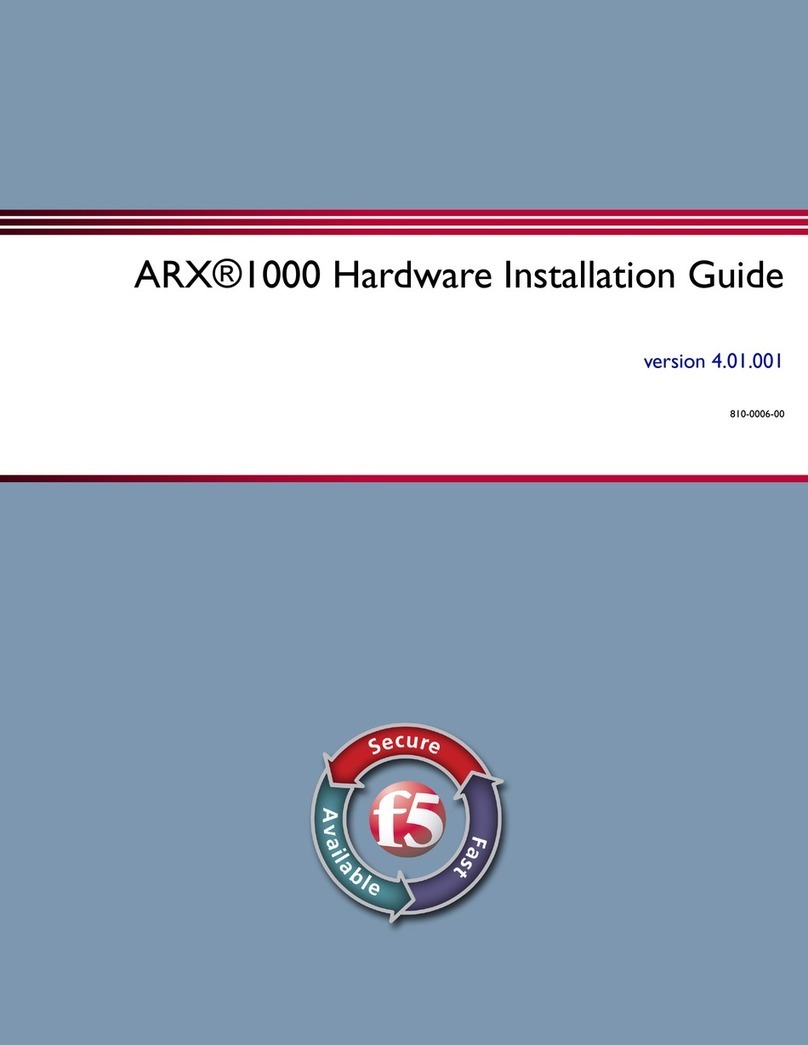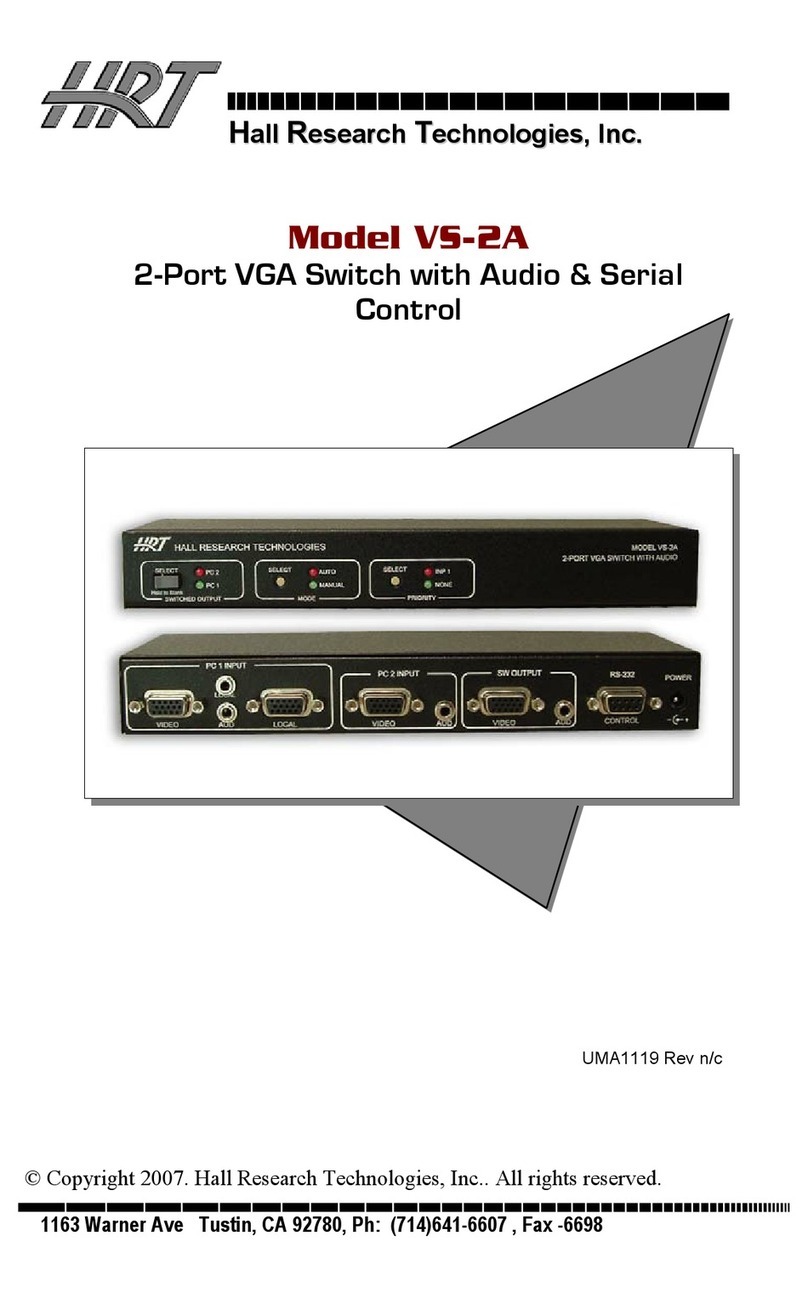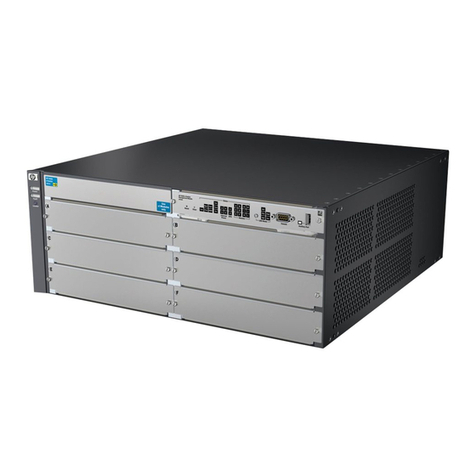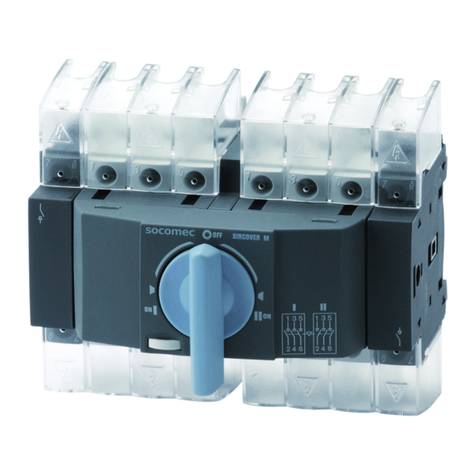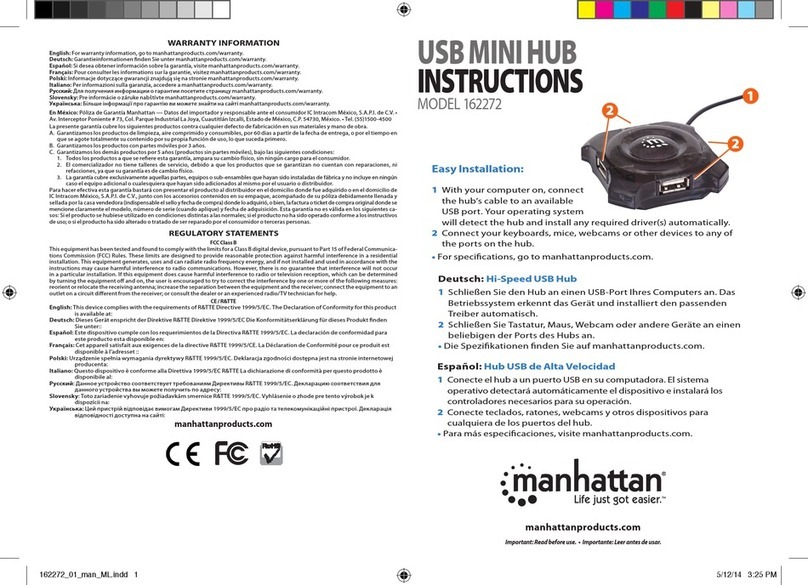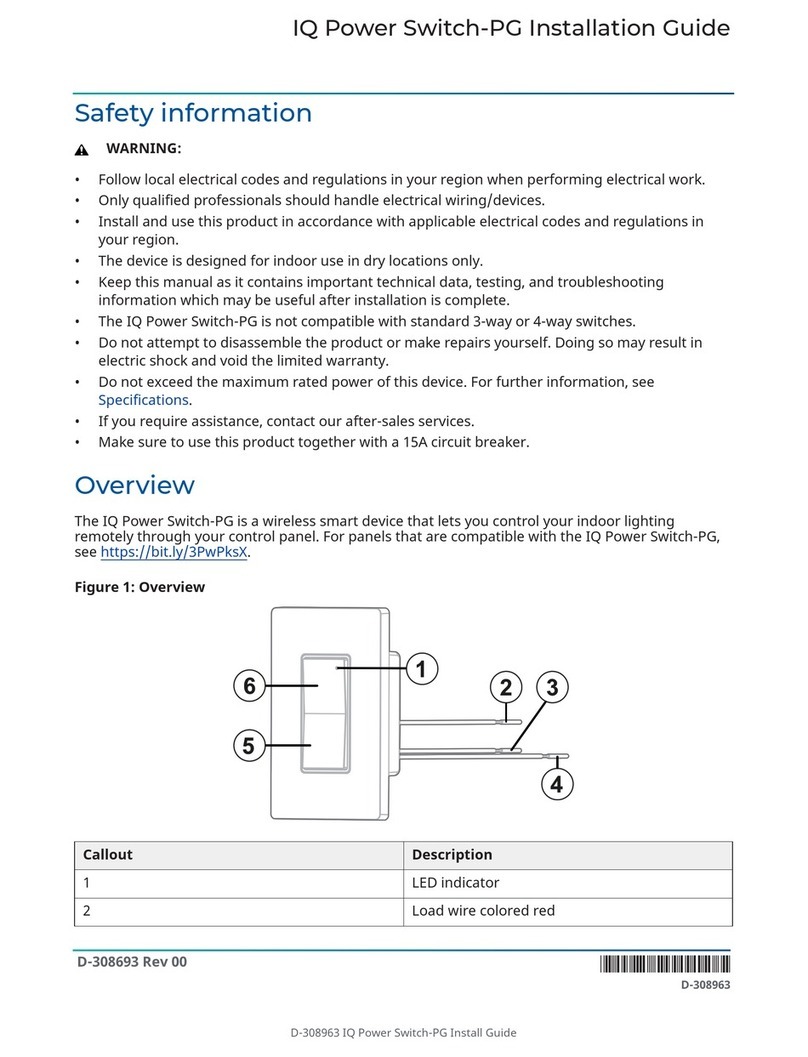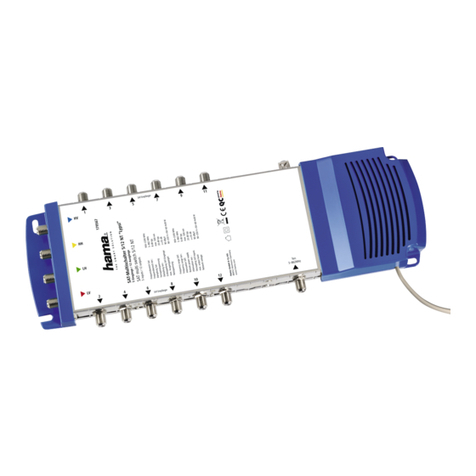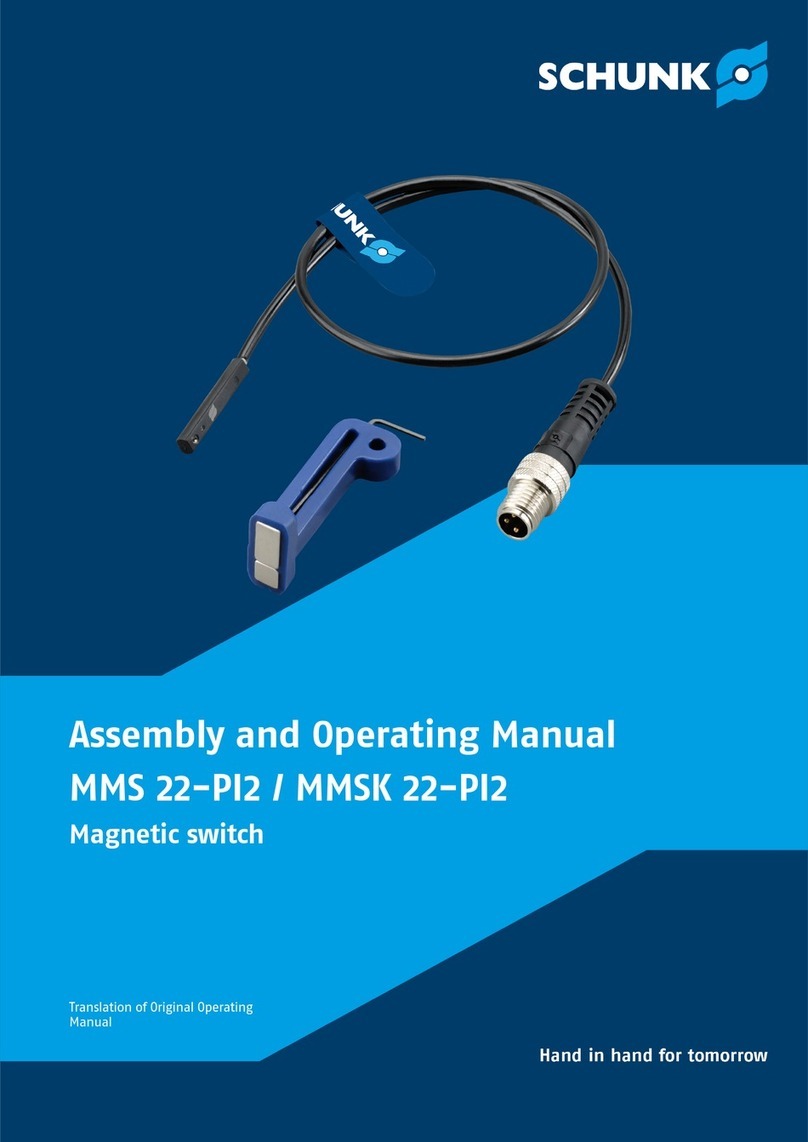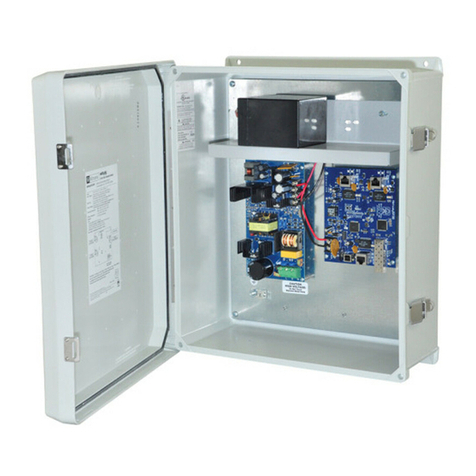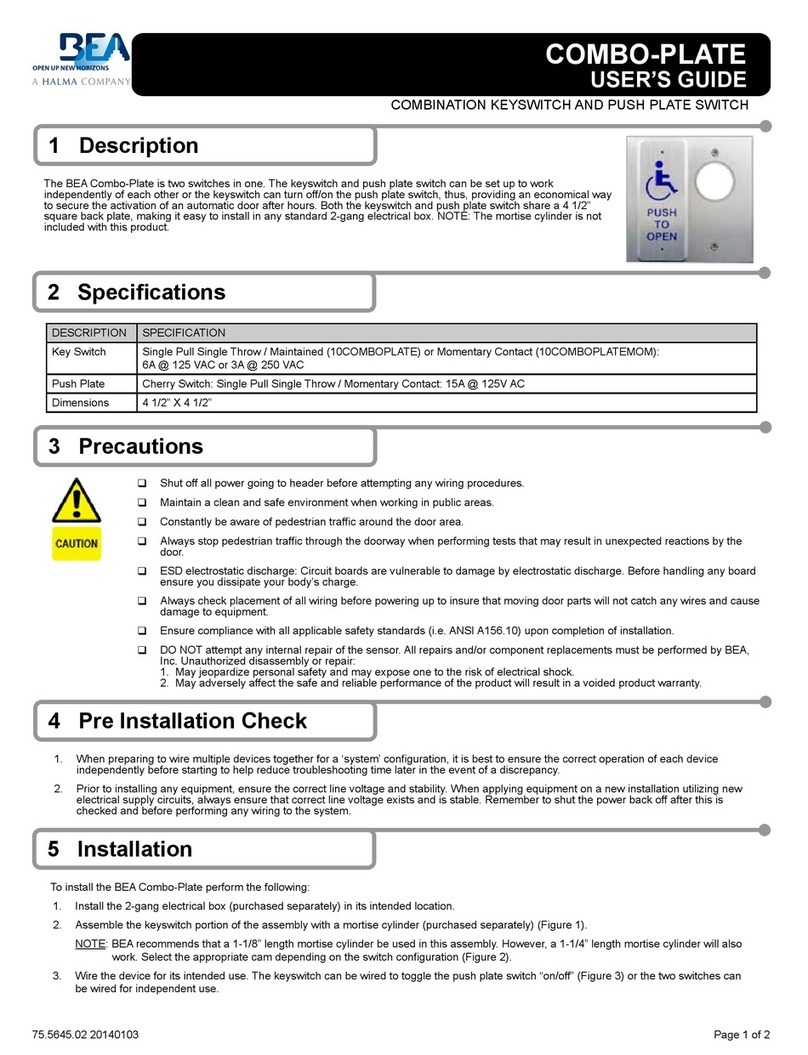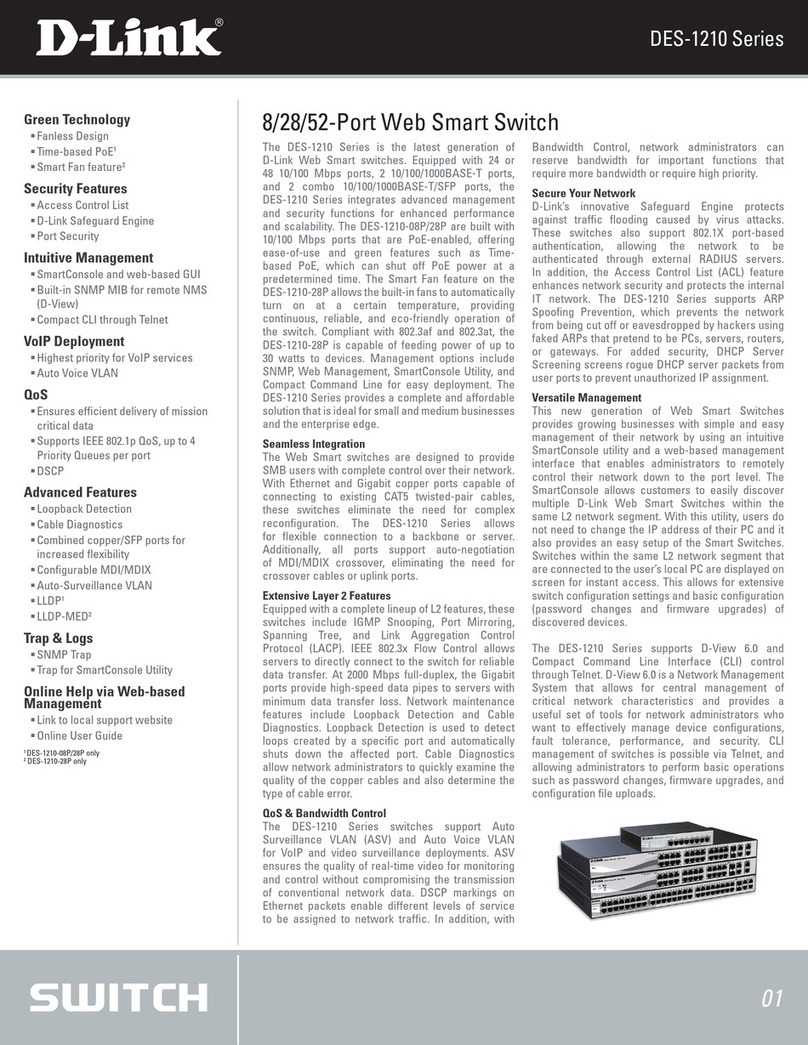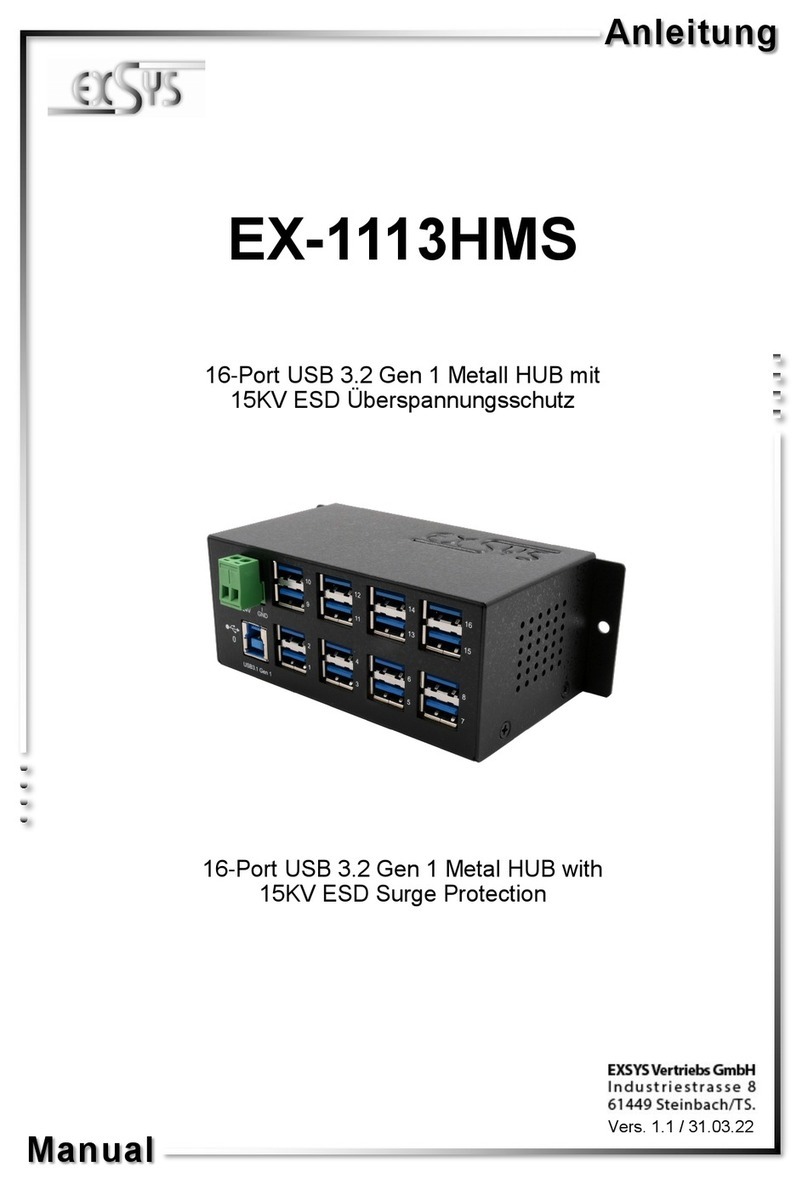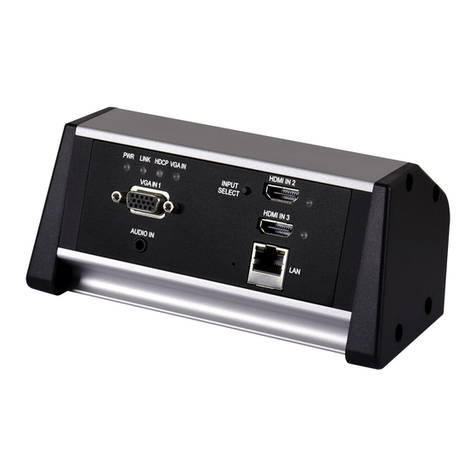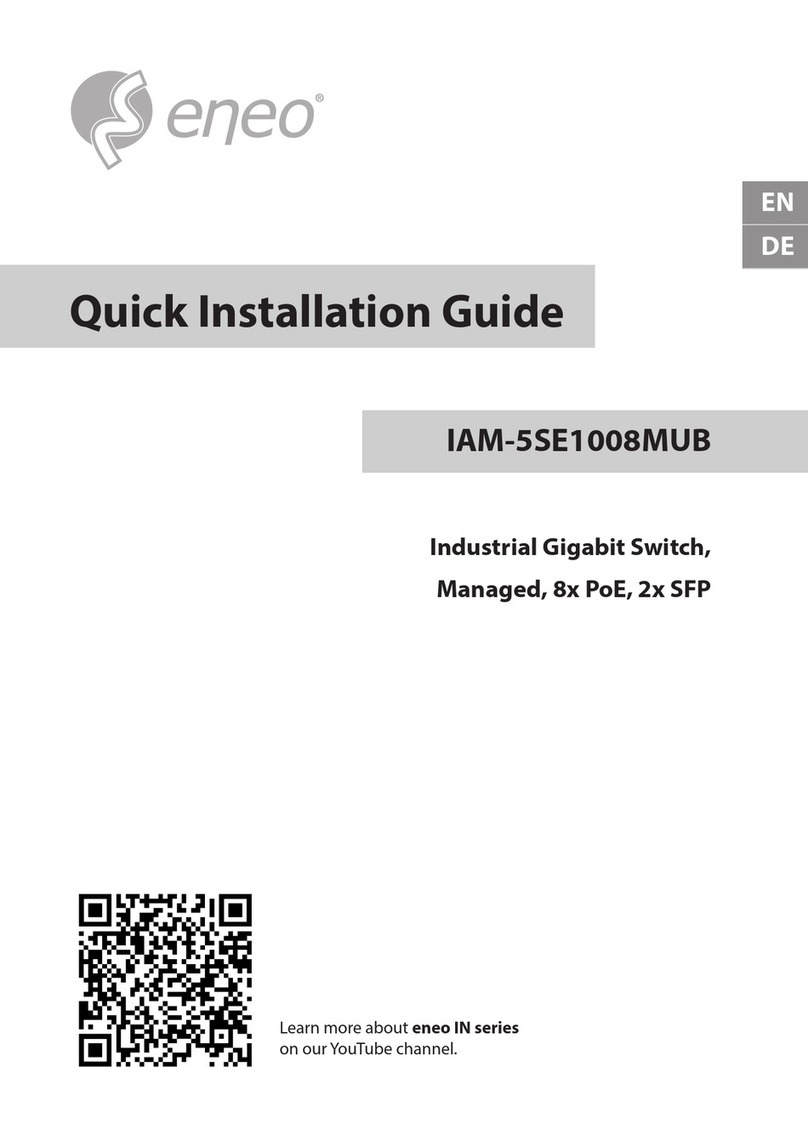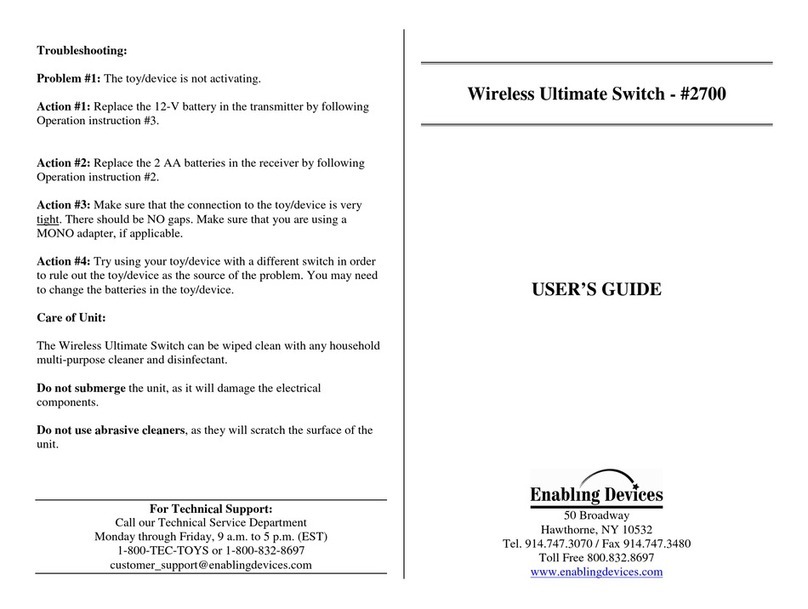Acopia Adaptive Resource Switch Operating manual

Acopia Networks®, Inc.
41 Wellman Street
Lowell, MA 01851
(978) 513-2900 tel
(978) 513-2990 fax
CLI Maintenance Guide
Part Number: 810-0045-00, Revision F

CLI Maintenance Guide
Copyright© 2006-2008, Acopia Networks®, Inc.
All Rights Reserved, Printed in U.S.A.
Revision History
September 2006 - Rev A
October 2006 - Rev B, updates for Software Release 2.4.2
March 2007 - Rev C, updates for Software Release 2.5.0
May 2007 - Rev D, updates for Software Release 2.5.1
February 2008 - Rev F, minor updates for Software Release 2.7.1
The information in this document is proprietary to Acopia Networks®, Inc. Any unauthorized reproduction,
distribution, or use of this material is strictly prohibited.
Acopia Networks®, Inc. assumes no responsibilities for any inaccuracies that may appear within this
document. In no event will Acopia Networks be liable for direct, indirect, special, exemplary, incidental, or
consequential damages resulting from any defect or omission within this document.
Acopia Networks®, Inc. reserves the right to alter the contents of this document at any time, and without any
notice.
The terms and conditions for using the products are described in the license agreement that either shipped with
the products, was contained in the acknowledgement to your purchase order, or was otherwise provided to you.
If you have any questions about the license terms, please contact your Acopia Networks representative. By
using the products you indicate that you understand and agree to be bound by the terms and conditions of the
license agreement.
The ARX’s Licensed Software includes object code versions of third party software packages. These software
packages are subject to the terms and conditions of the license agreements found at http://www.apache.org/
licenses/LICENSE-2.0; http://www.gnu.org/licenses/gpl.html; http://www.gnu.org/licenses/lgpl.html; ftp://
ftp.isc.org/isc/inn/inn-2.4.1.tar.gz (the license file is inn-2.4.1/LICENSE).
FreedomFabric™ is a trademark and ARX® is a registered trademark of Acopia Networks, Inc. All other
brands, products, or service names may be trademarks or service marks of the companies with which they are
associated.

CLI Maintenance Guide 2-iii
Contents
Chapter 1
Introduction
The ARX ...................................................................................................................1-1
Back-end Storage and Servers ...........................................................................1-2
Front-end Services .............................................................................................1-2
Policy .................................................................................................................1-2
Resilient Overlay Network (RON) ....................................................................1-3
Audience for this Manual..........................................................................................1-3
Using this Manual .....................................................................................................1-3
Document Conventions .............................................................................................1-4
CLI Overview............................................................................................................1-5
Exec Mode .........................................................................................................1-5
Global Commands ......................................................................................1-5
Priv-exec Mode ..................................................................................................1-5
Cfg Mode ....................................................................................................1-5
Gbl Mode ....................................................................................................1-6
Exiting a Mode...................................................................................................1-6
Prompts ..............................................................................................................1-6
The no Convention.............................................................................................1-7
The enable/no enable Convention......................................................................1-7
Getting Started...........................................................................................................1-8
Entering Cfg or Gbl Mode .................................................................................1-8
Sample Network........................................................................................................1-9
Contacting Customer Service..................................................................................1-12
Chapter 2
Backing Up a Volume’s Files
Mapping Client Requests to Back-End Paths ...........................................................2-2
Configuring a Source Server for the Restore ............................................................2-4
Restoring Files...........................................................................................................2-5

2-iv CLI Maintenance Guide
Running the Restore from a Remote Host......................................................... 2-8
Showing all Restore Operations ............................................................................. 2-10
Focusing on a Single Namespace, Volume, or Path ........................................ 2-12
Clearing Restore Operations from the Output................................................. 2-13
Canceling a Restore Operation ............................................................................... 2-14
Chapter 3
Backing Up the Running Configuration
Setting a Default FTP User....................................................................................... 3-1
Saving the Local Running Config ............................................................................ 3-2
Saving the Config Off to an FTP Server ........................................................... 3-3
Saving the Config Off to an SCP Server ........................................................... 3-4
Sending the Config to an E-Mail Recipient ...................................................... 3-4
Showing the Local Config................................................................................. 3-5
Saving the Global Config ......................................................................................... 3-6
Saving the Config Off to an FTP Server ........................................................... 3-7
Saving the Config Off to an SCP Server ........................................................... 3-8
Sending the Config to an E-Mail Recipient ...................................................... 3-8
Showing the Global Config............................................................................... 3-9
Focusing On Specific Configuration Sections ......................................... 3-11
Focusing On Named Configurations........................................................ 3-14
Saving Both Configs............................................................................................... 3-16
Saving the Config Off to an FTP Server ......................................................... 3-17
Saving the Config Off to an SCP Server ......................................................... 3-17
Sending the Config to an E-Mail Recipient .................................................... 3-18
Prepared for Disaster Recovery.............................................................................. 3-18
Restoring the Configuration ................................................................................... 3-19
Erasing the Current Configuration .................................................................. 3-19
Restoring the Local and Global Configs ......................................................... 3-20
Restoring Configs to a Redundant Pair ........................................................... 3-21
Restoring to One Peer .............................................................................. 3-23

CLI Maintenance Guide 2-v
Chapter 4
Upgrading Software
Before You Begin......................................................................................................4-1
Clearing Space for a New Release File.....................................................................4-2
Showing the Software Versions .........................................................................4-3
Deleting a Release File ......................................................................................4-4
Copying a Release File to the Switch........................................................................4-5
Downloading from an SCP Server.....................................................................4-6
Showing the Version of a Release File...............................................................4-7
Validating the Release File .........................................................................4-7
Arming the Switch with the Release File..................................................................4-8
Rebooting the Switch ................................................................................................4-8
Verifying the Installation....................................................................................4-9
Upgrading a Redundant Pair ...................................................................................4-10
Verifying the Active Switch’s Ability to Take Control....................................4-10
Checking the Health of the Backup Switch .....................................................4-12
Backing Up the Running-Config (Backup Switch Only) ................................4-13
Upgrading the Backup Switch .........................................................................4-13
Sanity Check ....................................................................................................4-14
Checking the Health of the Active Switch.......................................................4-15
Failing Over to the Upgraded Switch ..............................................................4-15
Success Path.....................................................................................................4-15
Failure Path ......................................................................................................4-15
Restoring the Old Configuration...............................................................4-17
Chapter 5
Metadata Utilities: nsck and sync
Showing the Progress of nsck and sync Jobs ............................................................5-2
Showing the nsck/sync Jobs for One Namespace..............................................5-3
Showing One nsck/sync Job ..............................................................................5-3
Showing all nsck/sync Jobs................................................................................5-4
Showing all nsck/sync Reports ..........................................................................5-5
Showing the Status of One Report..............................................................5-6
Showing Metadata.....................................................................................................5-7

2-vi CLI Maintenance Guide
Focusing on One Share.................................................................................... 5-10
Sending the Output to a Different File ............................................................ 5-11
Warning Signs for Metadata Inconsistencies.......................................................... 5-11
Finding Metadata Inconsistencies........................................................................... 5-12
Focusing on Multi-Protocol Issues.................................................................. 5-16
Synchronizing Metadata with Actual Files............................................................. 5-19
Synchronizing with Actual Directories ........................................................... 5-22
Synchronizing Metadata in a Single Share...................................................... 5-24
Showing the Progress of All Sync Operations ................................................ 5-25
Focusing on a Single Namespace, Volume, or Path ................................. 5-26
Clearing Sync Operations from the Output.............................................. 5-28
Canceling a Sync Operation ............................................................................ 5-29
Adding and Synchronizing Filer Subshares (CIFS) ............................................... 5-30
Rebuilding a Namespace ........................................................................................ 5-34
Rebuilding a Volume ....................................................................................... 5-35
Forcing the Rebuild ......................................................................................... 5-36
Resetting Directory Masters ............................................................................ 5-36
De-Staging a Namespace’s Managed Volumes ...................................................... 5-39
De-Staging a Volume....................................................................................... 5-40
Forcing the De-Stage....................................................................................... 5-41
Re-Enabling the Shares ................................................................................... 5-42
Migrating Metadata to a New Back-End Share...................................................... 5-43
Canceling a Metadata Migration ..................................................................... 5-45
Clearing All nsck Jobs............................................................................................ 5-45
Clearing One nsck Job..................................................................................... 5-46
Truncating a Report ......................................................................................... 5-47
Chapter 6
Troubleshooting Tools
Showing all Active Alarms....................................................................................... 6-1
Accessing the Syslog ................................................................................................ 6-2
Tailing the Syslog .............................................................................................. 6-4
Showing the End of the Syslog .................................................................. 6-5
Log Components ............................................................................................... 6-6
Syslog Syntax .................................................................................................. 6-16

CLI Maintenance Guide 2-vii
Reading IDs for Namespaces, Volumes, and Shares........................................6-17
Paging Through the Syslog (show logs) ..........................................................6-18
Searching Through the Syslog .........................................................................6-20
Filtering Messages Out .............................................................................6-21
Searching the End of the Syslog ...............................................................6-22
Showing the Documentation for a Syslog Message.........................................6-24
Copying the Syslog File to an FTP Server.......................................................6-25
Copying the Syslog File through SCP ......................................................6-26
Sending the Syslog File to an E-Mail Recipient.......................................6-26
Adjusting Logging Levels................................................................................6-27
Disabling Log Messages...........................................................................6-28
Showing All Log Components and Levels ...............................................6-29
Focusing on One Logging Level .......................................................6-30
Reverting Back to the Default Logging Level..........................................6-30
Sending Logs to an External Server........................................................................6-31
Removing a Logging Destination ....................................................................6-31
Sending Log Messages from a VLAN Interface (optional).............................6-32
Using the Out-of-Band Management Interface ........................................6-32
Showing all Logging Destinations...................................................................6-33
Listing Current System Tasks .................................................................................6-33
Showing Tasks from One Processor ................................................................6-36
Collecting Diagnostic Information..........................................................................6-37
Sending the Information Securely, through SCP .............................................6-38
Sending the Information in an E-Mail Message ..............................................6-39
Collecting the Information Locally..................................................................6-40
Showing the Diag-Info File ......................................................................6-40
Running the Collection Asynchronously .........................................................6-41
Collecting Partial Information .........................................................................6-42
Collecting Logs within a Time Frame .............................................................6-43
Running Show Commands from a Remote Host ....................................................6-44
Using Quotes within the Show Command.......................................................6-46
Chapter 7
Troubleshooting Network Connections
Pinging an IP Address ...............................................................................................7-1
Limiting the Ping Count.....................................................................................7-2

2-viii CLI Maintenance Guide
Pinging from a Particular Processor .................................................................. 7-3
Sending an Alternate Source IP......................................................................... 7-5
Pinging the OOB Management Network ................................................... 7-6
Using Traceroute....................................................................................................... 7-8
Testing Throughput with TTCP................................................................................ 7-8
Cancelling a TTCP Transmission...................................................................... 7-9
Testing a RON Tunnel....................................................................................... 7-9
Tracing NSM Processes in the “fastpath” Log ....................................................... 7-11
NSM-Log Components ................................................................................... 7-12
Adjusting NSM Logging Levels ..................................................................... 7-14
Filtering the Log Messages ...................................................................... 7-16
Disabling Log Messages for an NSM Component................................... 7-17
Showing All NSM-Log Components and Levels .................................... 7-17
Disabling Logs from an NSM Processor......................................................... 7-18
Accessing the fastpath Log.............................................................................. 7-19
NSM-Log-Message Syntax ...................................................................... 7-20
Capturing IP Traffic in a File.................................................................................. 7-21
Changing the Size and Number of Capture Files ............................................ 7-22
Stopping the Capture ....................................................................................... 7-22
Capturing all Proxy-IP Traffic......................................................................... 7-23
Listing all Capture Files .................................................................................. 7-23
Showing the Capture ................................................................................ 7-24
Showing All Capture Sessions ................................................................. 7-25
Copying the Capture File to an FTP Server .................................................... 7-26
Copying the Capture File to an SCP Server .................................................... 7-27
Configuring Port Mirroring .................................................................................... 7-28
Using an Alternative Destination Interface ..................................................... 7-30
Showing Active Port-Mirroring Sessions........................................................ 7-30
Shutting Down Port Mirroring ........................................................................ 7-31
Shutting Down Mirroring for One Source Port........................................ 7-31
Chapter 8
Troubleshooting Managed Volumes
Showing Share Statistics........................................................................................... 8-2
Showing Share Statistics from One Namespace ............................................... 8-7
Showing Statistics from One Volume ........................................................ 8-9

CLI Maintenance Guide 2-ix
Focusing on One Share .............................................................................8-11
Showing Share Statistics from One Filer .........................................................8-12
Showing Statistics from One Filer Share..................................................8-13
Removing an Imported Share..................................................................................8-14
Removing the Empty Directory Tree ...............................................................8-15
Extra Processing in a Multi-Protocol Volume..................................................8-15
Migrating NFS-Only Directories ..............................................................8-16
Forcing Strict-Attribute Consistency.................................................8-16
Finding Reports About the Share Removal .....................................................8-17
Showing the Drain-Share Report..............................................................8-19
Showing the Remove Report ....................................................................8-20
Removing the Share Asynchronously..............................................................8-21
Removing Shares Without File Migration .......................................................8-22
Forcing the Share Removal for Offline Filers ..........................................8-23
Canceling a Share Removal .............................................................................8-24
Correcting Share-Import Errors ..............................................................................8-25
Restarting the Import .......................................................................................8-45
Removing the Share from the Volume .............................................................8-46
Retaining Both Directories and Files in the Volume ................................8-46
Retaining Imported Directories (Not Files) in the Volume.......................8-48
Retaining Nothing from the Share ............................................................8-49
Reinstating the Share ................................................................................8-49
Reimporting the Entire Volume .......................................................................8-50
Removing a Full Namespace Service......................................................................8-51
Managing Namespace Collisions ............................................................................8-53
Finding the Renamed Files ..............................................................................8-54
Correcting the Collisions ..........................................................................8-56
Finding Collisions with CIFS ‘8.3’ Names.............................................................8-57
The ‘8.3’-FGN Pattern .....................................................................................8-58
Best Practice: Avoid Primary Names that Match this Pattern ..................8-58
Identifying All ‘8.3’ Collisions........................................................................8-59
Correcting the Collisions ..........................................................................8-60
Finding NFS-Only Entries in a Multi-Protocol Volume .........................................8-61
Best Practice: Avoid NFS-Only Entries Where Practical ................................8-61
Performance Issues ...................................................................................8-61
Identifying All NFS-Only Entries....................................................................8-62
Case-Blind Collisions (CC) ......................................................................8-65
Names with Characters that are Illegal in CIFS (IC)................................8-65

2-x CLI Maintenance Guide
Client View: Acopia-Generated Names............................................ 8-66
Names That Resemble FGNs (FN) .......................................................... 8-66
Unicode Characters in CIFS Names: Non-Mappable in NFS (NM)........ 8-67
Non-Mappable File Names ............................................................... 8-68
Non-Mappable Directory Names ...................................................... 8-68
Split Directories (SP) ............................................................................... 8-69
“Marked” Directories ............................................................................... 8-69
Preventative Striping......................................................................... 8-70
Correcting NFS-Only Entries .......................................................................... 8-70
Recursively Correcting Split Directories ................................................. 8-71
Running Periodic Checks for NFS-Only Entries............................................. 8-71
Finding a File’s Physical Location ......................................................................... 8-72
Showing the NFS Filehandles ......................................................................... 8-73
Finding the File with a Global-Server Name .................................................. 8-74
Finding the File with a WINS Name............................................................... 8-75
Finding the File from a Namespace Perspective ............................................. 8-76
Showing Policy History for a Volume .................................................................... 8-77
Showing Detailed Status for a Particular Rule ................................................ 8-78
Showing Any or All Pending Migrations........................................................ 8-79
Chapter 9
Troubleshooting CIFS Services
Showing Client-Connection Statistics ...................................................................... 9-1
Showing Statistics from One NSM Processor................................................... 9-3
Showing Client Sessions .......................................................................................... 9-4
Showing Client Sessions at One NSM Processor.............................................. 9-5
Getting Details on a Single Client..................................................................... 9-6
Dropping a CIFS Client ............................................................................................ 9-8
Listing Open Files in a CIFS Service ....................................................................... 9-9
Focusing on One NSM Processor.................................................................... 9-10
Closing an Open File .............................................................................................. 9-12
Listing Kerberos Tickets Granted to Clients .......................................................... 9-14
Listing Tickets Granted to a Particular Principal ............................................ 9-15

CLI Maintenance Guide 2-xi
Chapter 10
GUI Maintenance
Removing the SSL Key...........................................................................................10-1
Restarting the GUI ..................................................................................................10-2
Chapter 11
Powering Down the ARX
Saving Configuration Parameters............................................................................11-1
Checking the NVRAM Battery ...............................................................................11-2
Turning Off the Power.............................................................................................11-3
Limited Down Time ................................................................................................11-3
Restoring Power ......................................................................................................11-4
Verifying Successful Power-Up .......................................................................11-4
Showing Overall Health............................................................................11-4
Showing Namespace Status ......................................................................11-5
Showing Front-End Service Health ..........................................................11-8
Showing a Healthy Redundancy Configuration .......................................11-8

2-xii CLI Maintenance Guide

CLI Maintenance Guide 1-1
Chapter 1
Introduction
This manual contains instructions and best practices for troubleshooting and
maintaining the Adaptive Resource Switch (ARX®) after it is fully connected to the
network and running storage services. These instructions focus on the Command-Line
Interface (CLI).
Use this book after the ARX is installed, connected to the IP network, and serving
clients. The platform’s Hardware Installation manual explains how to install the
ARX. You can set up basic networking through a GUI wizard (as described in GUI
Quick Start: Network Setup manual), or work with the more-advanced CLI features
described in CLI Network-Management Guide. The GUI provides wizards for
configuring most of the storage features in the ARX (see GUI Quick Start Guide:
CIFS Storage and/or GUI Quick Start Guide: NFS Storage for instructions on using
these wizards); the CLI Storage-Management Guide provides procedures and
best-practices for configuring all of them through the CLI.
The ARX
The Adaptive Resource Switch (ARX®) is a highly available and scalable solution
that brings resource awareness to a file storage infrastructure, and adapts these
resources to meet the demands of users and applications in real time. The ARX
provides a file-virtualization layer that aggregates the total capacity and performance
of your file storage. A namespace provides location-independent, transparent
mapping of user requests onto the appropriate storage resource. You can configure
policies that the switch enforces for the placement, replication and migration of files.
Through policy configuration, the ARX adapts to the real-time demands of users and
applications. The ARX thereby serves as a resource proxy for the files and services
behind it.

Introduction
The ARX
1-2 CLI Maintenance Guide
Back-end Storage and Servers
The Adaptive Resource Switch aggregates heterogeneous file systems and storage
into a unified pool of file storage resources. Through this unification, you can manage
these resources to adapt to user demands and client applications. File storage assets
can be differentiated based on user-defined attributes, enabling a class-of-storage
model. You can reclaim stranded capacity through policy implementation for more
effective storage utilization, and you can add capacity without disruption. Back-end
resources are monitored for availability and performance, as well as user-access
patterns that drive policy decisions.
Front-end Services
The Adaptive Resource Switch acts as an in-band file proxy for the Network File
System (NFS) and Microsoft's Common Internet File System (CIFS) protocols.
Front-end services provide the file virtualization layer that masks the physical file
storage from the user and application. The switch becomes the file access point, as
opposed to the actual physical resource, providing file access through a namespace.
Users and applications maintain a single consistent file path that is transparently
mapped to the proper physical resource where the information resides.
Policy
The Adaptive Resource Switch provides policy-based resource switching. Through
policy configuration, you can optimize the placement of files onto the appropriate
storage resources and automatically adapt these resources based on user and
application demand. The ARX performs file replication and migration based on
performance, usage or other life-cycle characteristics, enabling you to implement a
flexible file services strategy. Examples of policies include: migrating files to reclaim
stranded capacity; migrating files across different tiers of storage based on access
patterns and/or value; and replicating frequently accessed files for performance. The
result is more efficient utilization and greater flexibility in file storage management.

Introduction
Audience for this Manual
CLI Maintenance Guide 1-3
Resilient Overlay Network (RON)
You can connect multiple ARXes with a Resilient Overlay Network (RON), which
can reside on top of any IP network. This provides a network for distributing and
accessing file storage. ARXes can replicate storage to other switches in the same
RON, updating the replicas periodically as the writable master files change. This is
called a shadow copy, where a source volume on one switch periodically copies its
files to one or more shadow volumes on other switches. Clients can access the shadow
volumes at multiple geographic locations, independent to where the source volume
resides.
Audience for this Manual
This manual is intended for
• network technicians responsible for layer 1 and 2 networks,
• network engineers responsible for the Internet Protocol (IP) layer (layer 3),
• storage engineers who design and manage storage systems (SANs, NASes, and
DASes), and
• crypto officers who manage all of the Critical Security Parameters (CSPs) of a
network.
The text presumes that all readers are comfortable with a command-line interface
(CLI), especially one based on the Cisco IOS.
Using this Manual
This manual contains instructions for maintaining an ARX after it has been fully
installed, it has been fully provisioned, and it has provided service to your clients.
Other manuals explain installation and provisioning. The Hardware Installation
Guide contains instructions to install the switch, set up its management IP, and
prepare it for CLI provisioning. After a successful installation, a network engineer can
then use the GUI Quick Start: Network Setup manual or the CLI
Network-Management Guide to set up all networking parameters. Finally, a storage
engineer can use the GUI wizards or the CLI Storage-Management Guide to
aggregate storage and set up storage policies.

Introduction
Document Conventions
1-4 CLI Maintenance Guide
The chapters in this manual contain maintenance instructions, such as
1. backing up and restoring client files through the ARX,
2. backing up configuration data with show running-config and similar commands,
3. performing software upgrades,
4. maintaining the metadata used by managed volumes,
5. reading the syslog and working with other basic-maintenance facilities,
6. using some network-troubleshooting tools (such as ping),
7. taking down and repairing managed volumes, and
8. powering down the switch for a planned outage.
Document Conventions
This manual uses the following conventions:
this font represents screen input and output;
•bold text represents input, and
•italic text appears for variable input or output.
this font is used for command-syntax definitions, which use the same rules for bold
and italic. Command-syntax definitions also use the following symbols:
•[optional-argument]- square brackets ([ ]) surround optional arguments;
•choice1 | choice2 - the vertical bar ( | ) separates argument choices;
•{choice1 | choice2 | choice3}- curly braces ({ }) surround a required choice;
•[
choice1 | choice2]* - an asterisk (*) means that you can choose none of them, or
as many as desired (for example, “choice1 choice2” chooses both);
•{
choice1 | choice2}+ - a plus sign (+) means that you must choose one or more.

Introduction
CLI Overview
CLI Maintenance Guide 1-5
CLI Overview
The Command-Line Interface (CLI) has its commands grouped into modes. Modes
are structured as a tree with a single root, exec mode. This section summarizes the
mode structure and explains some CLI conventions.
Exec Mode
When you log into the CLI, you begin in exec mode. If the hostname is “bstnA6k,”
the prompt appears as shown below:
bstnA6k>
You can access all global commands (such as show commands) from exec mode, and
you can use the enable command to enter priv-exec mode.
bstnA6k> enable
Global Commands
You can access global commands from any mode, not just exec. Global commands
include all show commands, terminal commands, commands for working with local
maintenance files (such as log files), and commands for running CLI scripts.
Priv-exec Mode
Priv-exec mode has the following prompt:
bstnA6k#
Priv-exec mode contains chassis-management commands, clock commands, and
other commands that require privileges but do not change the network or storage
configuration.
Priv-exec has two sub modes, cfg and gbl.
Cfg Mode
To enter cfg mode, use the config command:
bstnA6k# config

Introduction
CLI Overview
1-6 CLI Maintenance Guide
bstnA6k(cfg)#
Config mode contains all modes and commands for changing the configuration of the
local switch, such as network configuration.
Gbl Mode
To enter gbl mode, use the global command:
bstnA6k# global
bstnA6k(gbl)#
Gbl mode controls all parameters that are shared in an HA pair, such as namespaces
and global servers.
Exiting a Mode
From any mode, use the exit command to return to its parent mode. From priv-exec
mode, this command exits the CLI; to go from priv-exec mode back to exec mode,
use the no enable command.
From any submode of cfg or gbl mode, you can return immediately to priv-exec mode
by using the end command or pressing <Ctrl-z>.
Prompts
Prompts contain information about your position in the mode hierarchy as well as the
name of the object you are configuring. For example, suppose you use the following
command in gbl mode:
bstnA6k(gbl)# namespace wwmed
bstnA6k(gbl-ns[wwmed])#
This command places you into a new mode, as indicated by the new CLI prompt. The
prompt shows the name of the mode, “gbl-ns,” and the name of the configuration
object, a namespace called “wwmed.” Abbreviations are used for mode names (for
example, “ns” instead of “namespace”) to conserve space on the command line.
When you descend to lower modes in the config tree, the prompt offers more
information. To extend the previous example, suppose you enter the following
command to configure the “/local” volume in the wwmed namespace:

Introduction
CLI Overview
CLI Maintenance Guide 1-7
bstnA6k(gbl-ns[wwmed])# volume /local
bstnA6k(gbl-ns-vol[wwmed~/local])#
The tilde character (~) separates a parent object from its child: “wwmed~/local”
shows that you are in the “/local” volume under the “wwmed” namespace.
The no Convention
Most config commands have the option to use the “no” keyword to negate the
command. For commands that create an object, the no form removes the object. For
commands that change a default setting, the no form reverts back to the default. As an
example,
bstnA6k(gbl-ns[wwmed])# no volume /local
removes the “/local” volume from the “wwmed” namespace.
The enable/no enable Convention
Many objects and configurations require you to enable them using the enable
command before they can take effect. Likewise, many objects and configurations
require you to first disable them using the no enable command before you can
complete a related command or function. The no enable command does not remove
an object; it only disables it until you re-enable it. The enable/no enable commands
exist in many modes and submodes in the CLI.
For example, the following command sequence enables the namespace named
“wwmed:”
bstnA6k(gbl)# namespace wwmed
bstnA6k(gbl-ns[wwmed])# enable
bstnA6k(gbl-ns[wwmed])# ...

Introduction
Getting Started
1-8 CLI Maintenance Guide
Getting Started
For the initial login, refer to the instructions for booting and configuring the switch in
the appropriate Hardware Installation Guide.
For subsequent logins, use the following steps to log into the Acopia CLI:
1. If you are on-site, you can connect a serial line to the serial console port. This
port is labeled ‘Console;’ you can find it on the front panel of the switch. By
default, the port is set for 9600 baud, 8, N, 1.
You can also telnet to the switch’s management interface. For example:
telnet 10.10.10.10
In either case, a login prompt appears:
Username:
2. Enter your username and password. For example:
Username: admin
Password: acopia
The CLI prompt appears:
SWITCH>
The name, “SWITCH,” is the default hostname. The hostname is reset as part of
the initial-boot process, so it is likely that yours will differ.
Entering Cfg or Gbl Mode
The CLI contains two major configuration modes: cfg and gbl. The cfg mode contains
submodes for configuring locally-scoped parameters, only applicable to the local
ARX. These parameters include layer-2, layer-3, and chassis configuration. Gbl mode
applies to configuration that is shared among both switches in a redundant pair, such
as namespaces and global servers.
After you log into the CLI, use the config command to enter cfg mode:
SWITCH> enable
SWITCH# configure
SWITCH(cfg)#
Table of contents
Other Acopia Switch manuals
